-
 Bitcoin
Bitcoin $106,754.6083
1.33% -
 Ethereum
Ethereum $2,625.8249
3.80% -
 Tether USDt
Tether USDt $1.0001
-0.03% -
 XRP
XRP $2.1891
1.67% -
 BNB
BNB $654.5220
0.66% -
 Solana
Solana $156.9428
7.28% -
 USDC
USDC $0.9998
0.00% -
 Dogecoin
Dogecoin $0.1780
1.14% -
 TRON
TRON $0.2706
-0.16% -
 Cardano
Cardano $0.6470
2.77% -
 Hyperliquid
Hyperliquid $44.6467
10.24% -
 Sui
Sui $3.1128
3.86% -
 Bitcoin Cash
Bitcoin Cash $455.7646
3.00% -
 Chainlink
Chainlink $13.6858
4.08% -
 UNUS SED LEO
UNUS SED LEO $9.2682
0.21% -
 Avalanche
Avalanche $19.7433
3.79% -
 Stellar
Stellar $0.2616
1.64% -
 Toncoin
Toncoin $3.0222
2.19% -
 Shiba Inu
Shiba Inu $0.0...01220
1.49% -
 Hedera
Hedera $0.1580
2.75% -
 Litecoin
Litecoin $87.4964
2.29% -
 Polkadot
Polkadot $3.8958
3.05% -
 Ethena USDe
Ethena USDe $1.0000
-0.04% -
 Monero
Monero $317.2263
0.26% -
 Bitget Token
Bitget Token $4.5985
1.68% -
 Dai
Dai $0.9999
0.00% -
 Pepe
Pepe $0.0...01140
2.44% -
 Uniswap
Uniswap $7.6065
5.29% -
 Pi
Pi $0.6042
-2.00% -
 Aave
Aave $289.6343
6.02%
Is it necessary to sell when the volume is stagnant? The key points to distinguish between washing and shipping
Stagnant volume in crypto trading doesn't always mean sell; analyze price action and market sentiment. Watch for washing and shipping signs to avoid manipulation.
Jun 14, 2025 at 01:28 pm

In the world of cryptocurrency trading, understanding the dynamics of trading volume and the nuances of market behavior is crucial. One of the frequent questions that traders ask is whether it is necessary to sell when the volume is stagnant. Another related concern is how to distinguish between "washing" and "shipping," two terms that often confuse new traders. This article aims to provide a detailed analysis of these issues and offer guidance to help traders make informed decisions.
Understanding Stagnant Volume and Its Implications
Stagnant volume in cryptocurrency trading refers to a period when there is little to no change in the volume of trades occurring on a particular asset. This can be observed on trading charts where the volume bars remain consistently low over a period. The implications of stagnant volume can vary depending on the context of the market and the specific asset in question.
When volume is stagnant, it often indicates a lack of interest or activity in the asset. This could mean that the asset is in a consolidation phase, where the price is moving sideways and traders are waiting for a breakout. In such cases, it is not always necessary to sell immediately. Instead, traders should look for other indicators, such as price action and market sentiment, to make an informed decision.
However, if stagnant volume occurs during a downtrend, it might signal a lack of buying interest, and it could be a warning sign for holders to consider selling. It is essential to analyze the broader market context and not rely solely on volume to make trading decisions.
Distinguishing Between Washing and Shipping
The terms "washing" and "shipping" are often used in the crypto community to describe different types of market manipulation. Understanding these concepts is vital for traders to avoid falling victim to such practices.
Washing refers to a manipulative trading practice where an individual or a group of traders create the illusion of trading activity by buying and selling the same asset among themselves. This is often done to attract other traders into the market, creating a false sense of demand. To identify washing, traders should look for the following signs:
- Unusual patterns in trading volume: Sudden spikes in volume without corresponding changes in price can indicate washing.
- Lack of price movement: If the price remains stagnant despite high volume, it might be a sign of washing.
- Consistent trading patterns: If the same group of traders is involved in most trades, it could be a red flag.
On the other hand, shipping refers to the act of selling large amounts of an asset to drive the price down. This is typically done by whales or large holders to manipulate the market in their favor. To distinguish shipping from regular market activity, traders should look for the following indicators:
- Significant price drops: A sudden and sharp decline in price accompanied by high volume can indicate shipping.
- Large sell orders: If there are unusually large sell orders on the order book, it might be a sign of shipping.
- Market sentiment: Negative sentiment or news can sometimes trigger shipping by large holders looking to capitalize on fear.
When to Sell During Stagnant Volume
Deciding whether to sell during stagnant volume requires a careful analysis of multiple factors. Here are some key considerations:
- Price action: If the price is trending downwards during stagnant volume, it might be a good time to sell to minimize losses.
- Market sentiment: Negative sentiment or news can exacerbate the effects of stagnant volume, making it a more urgent situation to consider selling.
- Technical indicators: Use indicators like moving averages, RSI, and MACD to gauge the overall trend and momentum of the asset.
It is crucial to combine these factors to make a well-informed decision rather than relying solely on stagnant volume as a trigger to sell.
How to Analyze Volume Effectively
Analyzing volume effectively is a skill that can significantly enhance a trader's ability to make profitable trades. Here are some tips to help traders analyze volume more effectively:
- Use volume indicators: Tools like the Volume Weighted Average Price (VWAP) and On-Balance Volume (OBV) can provide deeper insights into volume trends.
- Compare volume with price action: Always look at volume in conjunction with price movements to understand the context better.
- Monitor volume over time: Short-term spikes in volume might not be as significant as sustained changes over longer periods.
By integrating these practices, traders can gain a more comprehensive understanding of volume and its impact on their trading decisions.
Case Studies: Real-World Examples
To illustrate the concepts discussed, let's look at a couple of real-world examples from the cryptocurrency market.
Case Study 1: Bitcoin Stagnant Volume
In early 2022, Bitcoin experienced a period of stagnant volume after a significant price drop. Traders who sold during this period might have missed out on a subsequent recovery. Analyzing the broader market context, including positive sentiment and technical indicators, could have suggested holding rather than selling.
Case Study 2: Ethereum Washing
In late 2021, there were reports of potential washing in the Ethereum market. Traders noticed unusual volume spikes without corresponding price changes. By closely monitoring trading patterns and volume indicators, traders could have identified these as potential signs of washing and adjusted their strategies accordingly.
Practical Steps to Monitor Volume and Detect Manipulation
To effectively monitor volume and detect potential market manipulation, traders can follow these practical steps:
- Set up volume alerts: Use trading platforms that allow you to set alerts for significant volume changes.
- Use volume analysis tools: Incorporate tools like TradingView or Coinigy, which offer advanced volume analysis features.
- Monitor trading patterns: Regularly check the order book and trade history to spot unusual patterns that might indicate washing or shipping.
- Stay informed: Follow reputable crypto news sources and community forums to stay updated on market sentiment and potential manipulation.
By following these steps, traders can enhance their ability to make informed decisions based on volume and market activity.
Frequently Asked Questions
Q1: Can stagnant volume ever be a positive sign for traders?
Yes, stagnant volume can sometimes indicate a period of consolidation, which can be a precursor to a significant price movement. Traders should look for other technical indicators to confirm whether the consolidation is likely to lead to a breakout.
Q2: How can I protect myself from falling victim to washing and shipping?
To protect yourself, always conduct thorough research, use reputable exchanges, and be cautious of assets with unusually high volume without corresponding price changes. Additionally, diversify your portfolio to minimize the impact of any single manipulated asset.
Q3: Are there specific times of day when volume tends to be more stagnant?
Volume can be more stagnant during off-peak trading hours, such as late at night or early in the morning, depending on the time zone of the exchange. However, this can vary based on global market activity and news events.
Q4: How can I use volume to confirm a trend?
To confirm a trend using volume, look for increasing volume during uptrends and decreasing volume during downtrends. This can help validate the strength of the trend and provide confidence in your trading decisions.
Disclaimer:info@kdj.com
The information provided is not trading advice. kdj.com does not assume any responsibility for any investments made based on the information provided in this article. Cryptocurrencies are highly volatile and it is highly recommended that you invest with caution after thorough research!
If you believe that the content used on this website infringes your copyright, please contact us immediately (info@kdj.com) and we will delete it promptly.
- 2025-W Uncirculated American Gold Eagle and Dr. Vera Rubin Quarter Mark New Products
- 2025-06-13 06:25:13
- Ruvi AI (RVU) Leverages Blockchain and Artificial Intelligence to Disrupt Marketing, Entertainment, and Finance
- 2025-06-13 07:05:12
- H100 Group AB Raises 101 Million SEK (Approximately $10.6 Million) to Bolster Bitcoin Reserves
- 2025-06-13 06:25:13
- Galaxy Digital CEO Mike Novogratz Says Bitcoin Will Replace Gold and Go to $1,000,000
- 2025-06-13 06:45:13
- Trust Wallet Token (TWT) Price Drops 5.7% as RWA Integration Plans Ignite Excitement
- 2025-06-13 06:45:13
- Ethereum (ETH) Is in the Second Phase of a Three-Stage Market Cycle
- 2025-06-13 07:25:13
Related knowledge
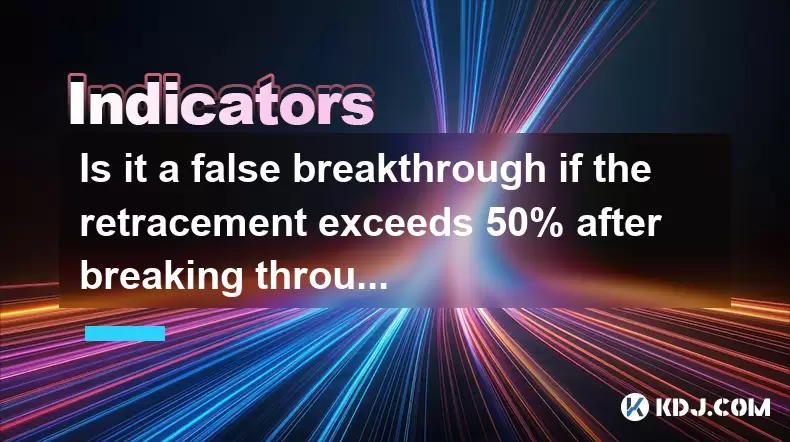
Is it a false breakthrough if the retracement exceeds 50% after breaking through the platform?
Jun 17,2025 at 08:01pm
Understanding Breakouts and Retracements in Cryptocurrency TradingIn cryptocurrency trading, breakouts refer to when the price of an asset moves beyond a defined support or resistance level with increased volume. These events often attract traders looking to capitalize on momentum. However, not all breakouts are valid. A false breakout, also known as a ...
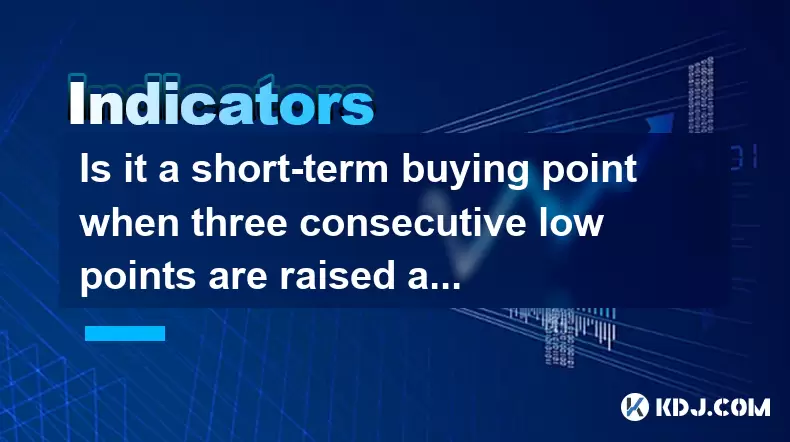
Is it a short-term buying point when three consecutive low points are raised at the 30-minute level?
Jun 17,2025 at 08:14pm
Understanding the Three Consecutive Low Points PatternIn technical analysis, identifying patterns in price movements is essential for making informed trading decisions. One such pattern that traders often observe is when three consecutive low points are raised within a specific timeframe — in this case, the 30-minute chart. This pattern suggests a poten...
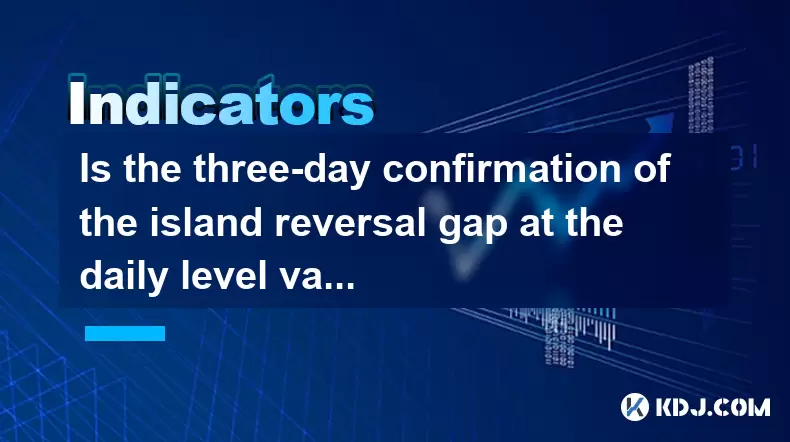
Is the three-day confirmation of the island reversal gap at the daily level valid?
Jun 17,2025 at 09:49pm
Understanding the Island Reversal Gap in Cryptocurrency TradingIn cryptocurrency trading, technical analysis plays a pivotal role in identifying potential market reversals. One such pattern is the island reversal gap, which signals a possible trend change. This pattern consists of a gap followed by a period of consolidation or sideways movement and then...
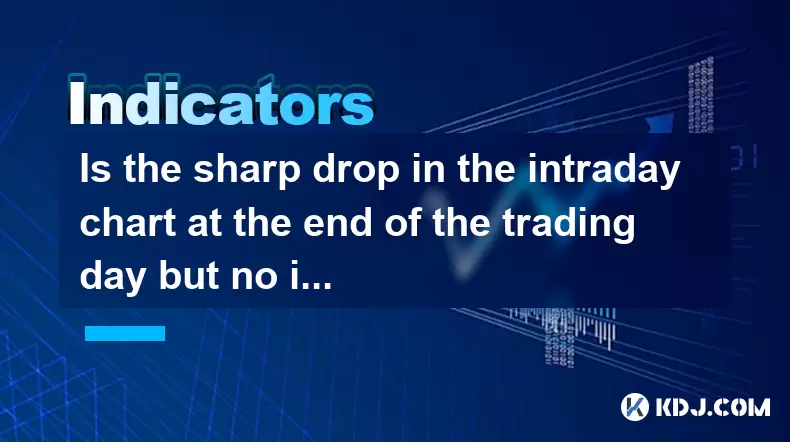
Is the sharp drop in the intraday chart at the end of the trading day but no increase in volume a trap to sell?
Jun 17,2025 at 08:35pm
Understanding the Intraday Chart DynamicsIn cryptocurrency trading, intraday charts are widely used by traders to analyze short-term price movements. These charts display price fluctuations within a single trading day and help traders make informed decisions based on real-time data. One common phenomenon observed is a sharp drop in price near the end of...
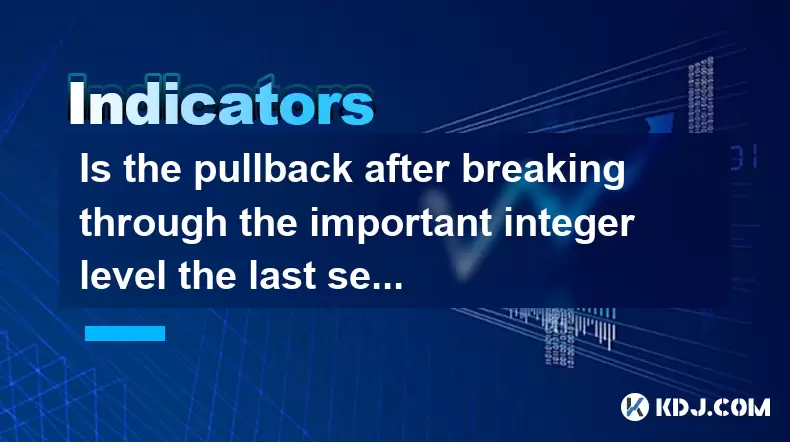
Is the pullback after breaking through the important integer level the last selling point?
Jun 17,2025 at 08:57pm
Understanding Important Integer Levels in Cryptocurrency TradingIn the world of cryptocurrency trading, certain price levels hold significant psychological and technical importance. These are commonly referred to as important integer levels—such as $10,000 for Bitcoin or $1,000 for Ethereum. These levels often act as strong support or resistance zones d...
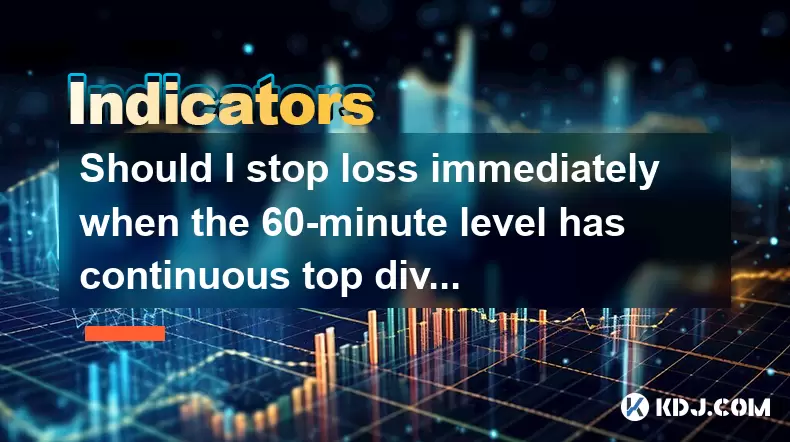
Should I stop loss immediately when the 60-minute level has continuous top divergence?
Jun 17,2025 at 05:28pm
Understanding Top Divergence in the 60-Minute ChartIn cryptocurrency trading, top divergence refers to a technical signal where the price of an asset makes higher highs while the indicator (often RSI or MACD) makes lower lows. This is commonly interpreted as a sign of weakening momentum and potential reversal. When this occurs on the 60-minute chart, it...

Is it a false breakthrough if the retracement exceeds 50% after breaking through the platform?
Jun 17,2025 at 08:01pm
Understanding Breakouts and Retracements in Cryptocurrency TradingIn cryptocurrency trading, breakouts refer to when the price of an asset moves beyond a defined support or resistance level with increased volume. These events often attract traders looking to capitalize on momentum. However, not all breakouts are valid. A false breakout, also known as a ...

Is it a short-term buying point when three consecutive low points are raised at the 30-minute level?
Jun 17,2025 at 08:14pm
Understanding the Three Consecutive Low Points PatternIn technical analysis, identifying patterns in price movements is essential for making informed trading decisions. One such pattern that traders often observe is when three consecutive low points are raised within a specific timeframe — in this case, the 30-minute chart. This pattern suggests a poten...

Is the three-day confirmation of the island reversal gap at the daily level valid?
Jun 17,2025 at 09:49pm
Understanding the Island Reversal Gap in Cryptocurrency TradingIn cryptocurrency trading, technical analysis plays a pivotal role in identifying potential market reversals. One such pattern is the island reversal gap, which signals a possible trend change. This pattern consists of a gap followed by a period of consolidation or sideways movement and then...

Is the sharp drop in the intraday chart at the end of the trading day but no increase in volume a trap to sell?
Jun 17,2025 at 08:35pm
Understanding the Intraday Chart DynamicsIn cryptocurrency trading, intraday charts are widely used by traders to analyze short-term price movements. These charts display price fluctuations within a single trading day and help traders make informed decisions based on real-time data. One common phenomenon observed is a sharp drop in price near the end of...

Is the pullback after breaking through the important integer level the last selling point?
Jun 17,2025 at 08:57pm
Understanding Important Integer Levels in Cryptocurrency TradingIn the world of cryptocurrency trading, certain price levels hold significant psychological and technical importance. These are commonly referred to as important integer levels—such as $10,000 for Bitcoin or $1,000 for Ethereum. These levels often act as strong support or resistance zones d...

Should I stop loss immediately when the 60-minute level has continuous top divergence?
Jun 17,2025 at 05:28pm
Understanding Top Divergence in the 60-Minute ChartIn cryptocurrency trading, top divergence refers to a technical signal where the price of an asset makes higher highs while the indicator (often RSI or MACD) makes lower lows. This is commonly interpreted as a sign of weakening momentum and potential reversal. When this occurs on the 60-minute chart, it...
See all articles

























































































